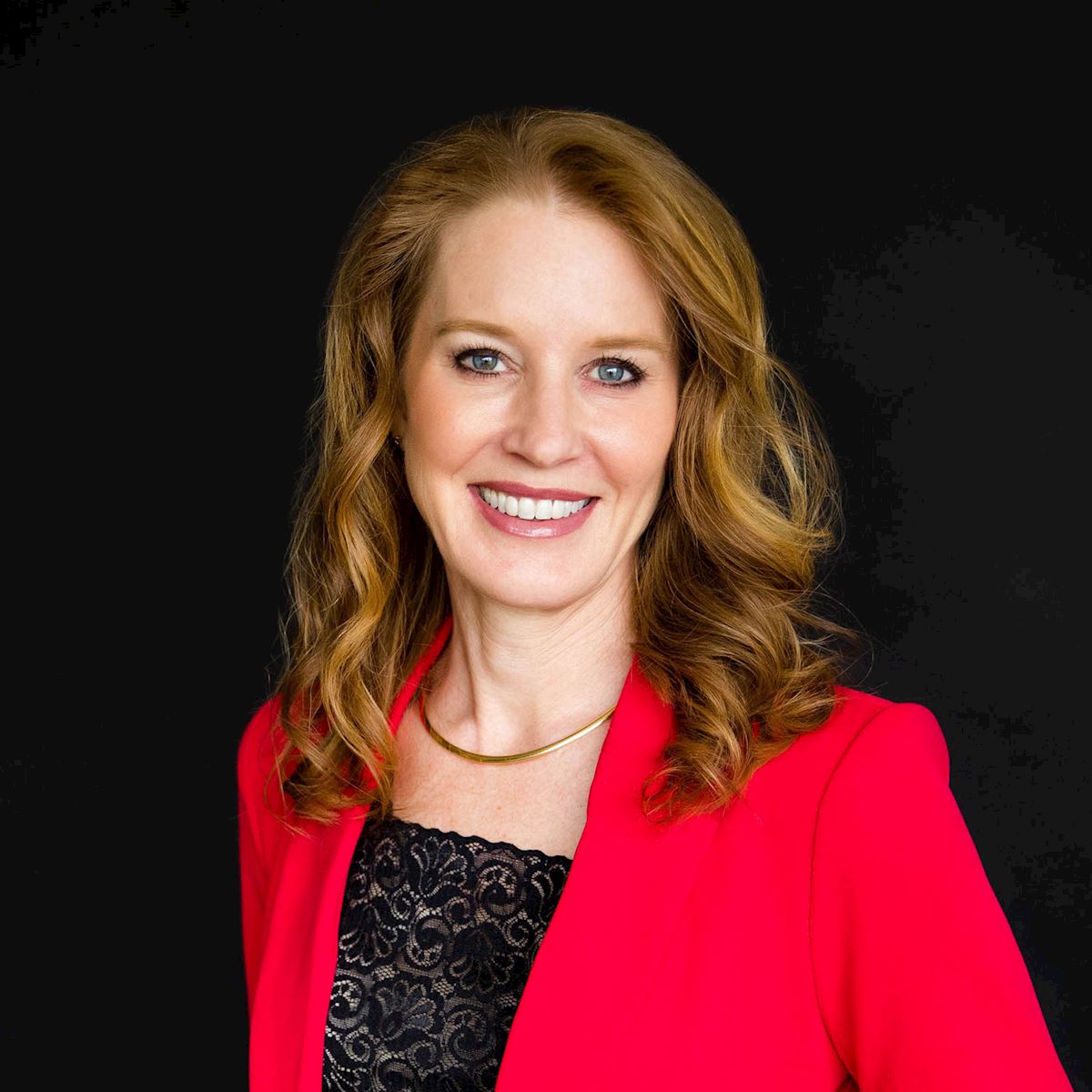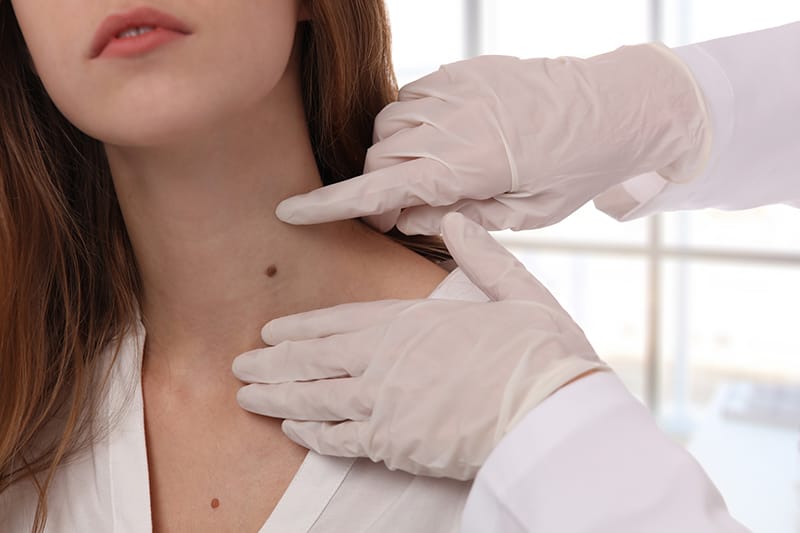A leopard cannot change its spots. But humans can change theirs.
Every day, people expose their skin to the sun's natural ultraviolet rays or a tanning bed's artificial ones to "get some color." They get tanner skin, and in some cases, red sunburns. And those changes to the skin lead to more color — pink, red, dark brown and black spots — that are not what you envisioned in your quest for a healthy glow.
When your spots change, it could be an early sign of skin cancer.
"Any spot that is new, different or just not healing, it's good to be aware of those," says Susan Rhyan, PA-C, a Dermatology physician assistant at The Iowa Clinic's West Des Moines campus. "I like to call them the ugly duckling spots. They just don't look like your other spots."
Your skin can develop new spots after sun exposure. Or an old freckle or mole that's looked the same for years can suddenly change in size, shape or color. You have to be familiar with the spots on your skin to catch these changes.
"After age 30 or so, you start to see more age spots, sun freckles and those types of things. Sometimes it's hard to tell what they are," Rhyan says. "It's just good to get a baseline so you know what you have on your body."
A dermatologist can do a skin cancer screening, a visual examination to look over your entire body. They look for anything suspicious — spots with abnormal shape, color, texture or size. They also point out all the common spots that you have so you become more familiar with your own skin.
Checking your own spots and moles helps catch skin cancer early.
"Just pay attention to your skin. Check yourself over at home monthly in front of a full-length mirror to get used to what's on your skin," Rhyan says. "Have somebody help you check the back of your body or use a hand mirror."
She recommends following the ABCDE method to examine your moles and identify anything that has changed since your baseline skin cancer screening:
- Asymmetry – Most spots and moles are circular and consistent. When one half is unlike the other half, that's a concern.
- Border – Similar to asymmetry, look at the border to see if it's uneven, jagged or poorly defined.
- Color – Both cancerous and regular moles can be many colors. Color or tone that varies from one area to the other is cause for worry.
- Diameter – Large moles and spots are rare. If one of yours is larger than the size of a pencil eraser, it could be cancerous.
- Evolving – Exposure to UV rays can change any of the above. Monitor your moles and spots regularly to make sure they aren't changing over several weeks or months.
"Any change in the size, shape, border or color — those are signs to watch for," Rhyan says. "If you find anything out of the ordinary, visit your dermatologist to have it looked at."
A weird mole doesn't mean you have melanoma.
"There are different types of skin cancer. They can all look different. Sometimes we can't tell which type it is until we biopsy it," Rhyan says. "It might look like a little dry patch, like eczema, that's not healing up. It can be pink. It can be scaly. It can be a dark brown or black spot."
Melanoma is the most commonly known and most dangerous skin cancer. According to the Iowa Cancer Registry's 2018 "Cancer in Iowa" report, melanoma skin cancer is the fifth most common type of cancer in the state and has been on the rise since 2014.
"Melanoma is the most severe type of skin cancer. It's the bad one that can spread. It can get into your lymph nodes and metastasize and kill you if it's not caught early," Rhyan says.
While dangerous, melanoma isn't the most common form of skin cancer. Of the 3.3 million people diagnosed with skin cancer annually in the United States, 80 percent have basal cell carcinomas. Squamous cell carcinomas also occur more frequently than melanoma skin cancers. Basal and squamous cell skin cancers grow much slower and are curable when caught early.
Unfortunately, you can't tell by looking at a mole whether it's cancerous or what type it is. It could very well be a normal skin spot with an abnormal appearance. A dermatologist can't always tell the difference either. But if your mole has changed or shares similar traits to a typical cancerous mole, your dermatologist will remove a small piece of it for a biopsy. From there, you'll learn whether you're in the clear or if you have skin cancer.
Most skin cancers are treatable — and preventable.
"If a biopsy is benign, we don't have to do any more. If it's malignant, then the treatment depends on what type of cancer it is, where it's located, how deep it goes and other factors. There are a lot of different treatments available," Rhyan says.
Basal cell skin cancer is often superficial. Occasionally a cream can be used that irritates the skin and removes the growth. Both basal and squamous cell cancers can be removed by burning and scraping them off the skin. For cancers that are larger or penetrate deeper into the epidermis, an incision or surgery is needed to remove all the cancerous cells.
You can avoid treatment altogether by preventing skin cancer.
"Repeated sunburns and sun exposure raise your risk of developing skin cancer," Rhyan says. "Basal and squamous cell cancers tend to be on sun-exposed areas — the head, neck, trunk and arms. And a history of bad, blistering sunburns raises your risk of melanoma."
She recommends protecting yourself from the sun any time you're outside by:
- Wearing sunscreen and lip balm with SPF 30 or higher and applying it 15 to 30 before sun exposure to allow the ingredients to kick in.
- Reapplying sunscreen at least every couple of hours — more frequently if you're swimming or sweating.
- Wearing a hat to protect your scalp, especially if you have a bald head.
- Staying out of the tanning bed.
- Avoiding the worst UV rays between 10 am and 4 pm by staying in the shade or wearing long clothing.
- Using extra caution when you're at a higher altitude or around sand, water, snow or concrete.
"There's no such thing as a safe tan. Your skin's way of protecting itself is by creating a burn or a tan. Well, that's still damaging your skin," Rhyan says. "Anything that's exposed is fair game and the majority of the sun's rays come at you from an angle, not from above. You get a lot of reflection from the water, sand and concrete and those rays are intensified. That's why you have to wear sunscreen."


.jpg)